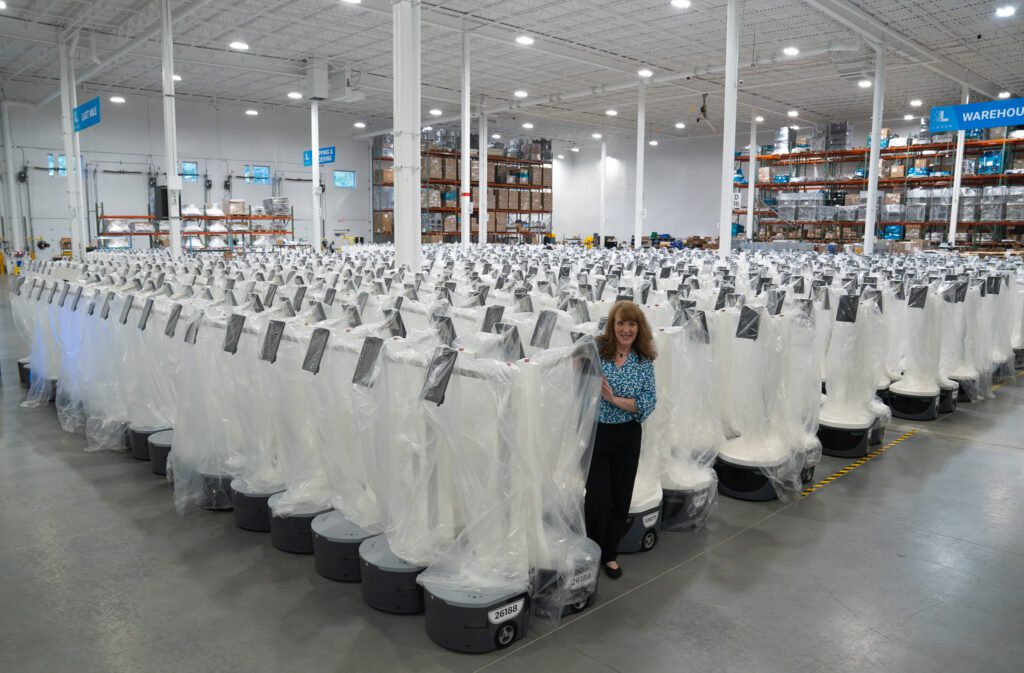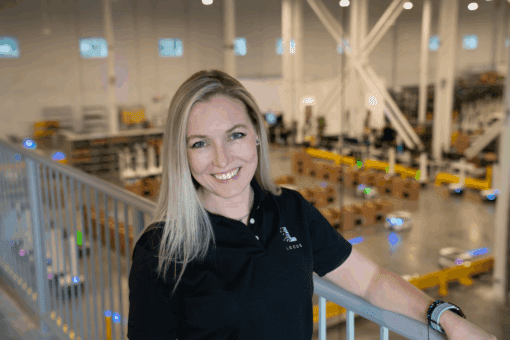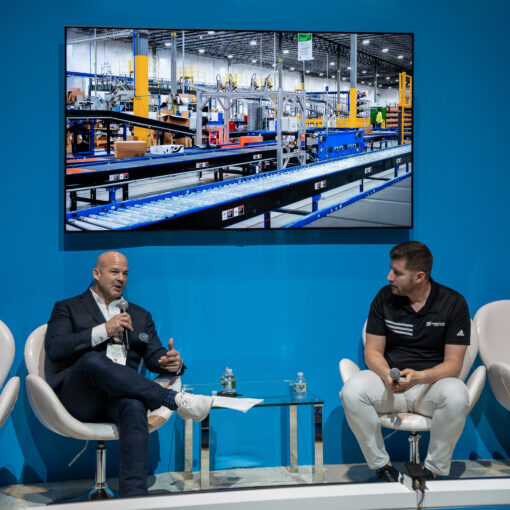WP: How to achieve 400 UPH with Locus Fast Pick
WP: How to achieve 400 UPH with Locus Fast Pick Download Now!
Plan, Don’t Panic: How Smart Warehouses Get Ahead of Peak Season
Mary Hart, Sr. Content Marketing Manager

Peak season in warehousing is about increased volume and orders, but for smart warehouses, it’s also about velocity, variability, and visibility. As Austin Feagins of Staci Americas put it on the “Warehouse Automation Matters” podcast, “The day we’re coming through the current peak is the day we need to start preparing for the upcoming.” That mindset is what separates reactive fulfillment from resilient warehouse operations.
This year, warehouses that succeed won’t be the ones with the most labor or the newest tech, but the ones with the best planning. Here’s how to start.
Treat Peak Like a Year-Round Warehouse Strategy
If planning only begins in Q4, you’re already behind, so the most effective warehouses treat peak like a 12-month cycle with an opportunity to learn, adjust, and iterate every year.
What to do now:
- Review last year’s operational pain points: not just order volume, but throughput, labor churn, and error rates
- Build peak-specific process maps that highlight handoffs, dependencies, and likely bottlenecks
- Use post-peak data as your starting point, not an afterthought
Feagins advises teams to “really think about as many factors that could push your plans out and just try and be prepared to handle those.” That means building in buffers – not just in labor, but in inventory, equipment, and training.
Model Volume and Build for Flexibility
Peak season isn’t just “more orders.” It’s more items per order, more picking complexity, and higher expectations. Demand can double or triple overnight, but SLAs stay the same.
That’s why warehouse modeling isn’t optional. It’s how you anticipate volume spikes, map capacity limits, and pressure-test workflows before you’re in the thick of it.
What to do now:
- Run simulations using last year’s peak data as a baseline
- Identify threshold points where pick paths break down or packing areas back up
- Plan contingency shifts, zone expansions, or temporary automation support
In 2024, Locus Robots picked over 500 million items during peak, which was a 40% increase over the previous year, but the real takeaway isn’t the number. It’s that warehouses prepared for that scale ahead of time by automating year-round instead of waiting until peak to do so.
Simplify Training for Seasonal Warehouse Teams
Seasonal workers are essential, but short training windows often mean long learning curves. The best preparation is simplicity.
As Feagins said, “In an ideal world, I would love to teach somebody in under 30 seconds how they’re going to do their job for the day.” That’s where intuitive tech, clear SOPs, and automation designed with humans in mind come in.
What to do now:
- Audit training materials: are they video-based, step-by-step, and easy to follow?
- Choose tech platforms that reduce cognitive load instead of adding to it
- Use gamification or visual cues to drive speed and engagement
Even small tweaks like on-device instructions or color-coded pick zones can pay big dividends during crunch time.
Automate What Drains Your Team Most
Peak stress isn’t just about order spikes. It’s about repetitive, physically demanding tasks that wear down your workforce. The average Locus Robot traveled 3.8 million miles last year during peak, which is an equivalent of 152 times around the Earth — a distance those warehouse teams didn’t have to walk.
Warehouse automation, like autonomous mobile robots (AMRs) from Locus, absorbs the physical work of traveling that distance and allows your workers to mainly stay in one place, which improves productivity and preserves your people.
What to do now:
- Identify high-walk or high-fatigue workflows
- Consider increasing your AMR fleet for peak orders to help out your workers
- Free up skilled labor to handle exception orders, returns, or complex fulfillment tasks
And don’t forget the morale factor. As Feagins noted, gamification features in automation platforms, like friendly pick competitions, can turn peak season from a grind into a game.
Ask Now, Not Later
If you’re still evaluating options, don’t wait. “Ask now and start reaching out to these vendors,” Feagins advised. It doesn’t have to be a massive overhaul to make a meaningful difference. Sometimes, a single workflow change or a targeted warehouse automation rollout is enough to tip the balance.
Whether you’re preparing for your first peak with automation or refining your tenth, the message is the same: Plan early, plan often, and plan smart.
Want more insights from Austin Feagins?
Catch the full episode of “Warehouse Automation Matters” to hear how Staci Americas approaches peak with a mix of planning, people, and technology that keeps operations moving, no matter how intense the surge.




